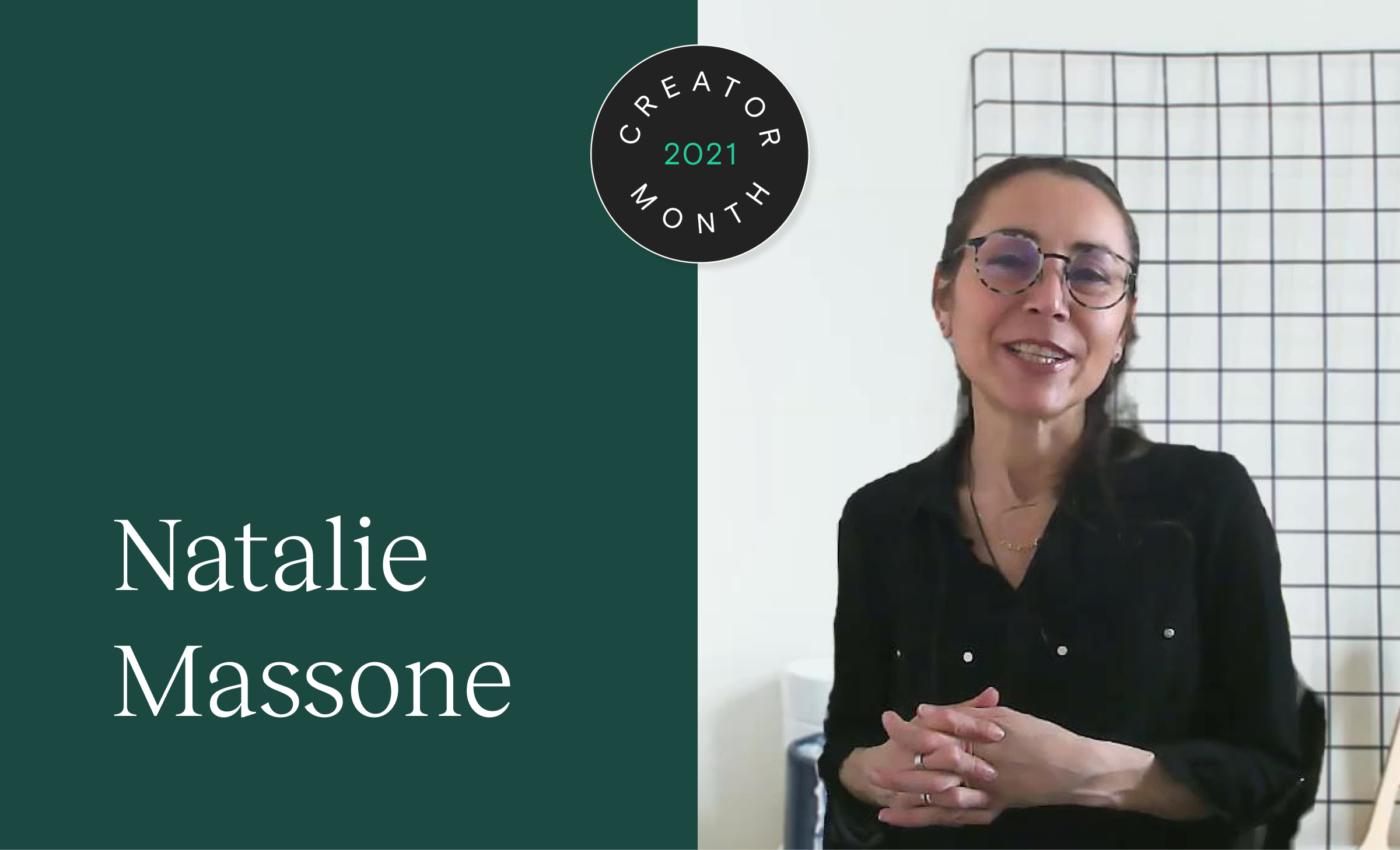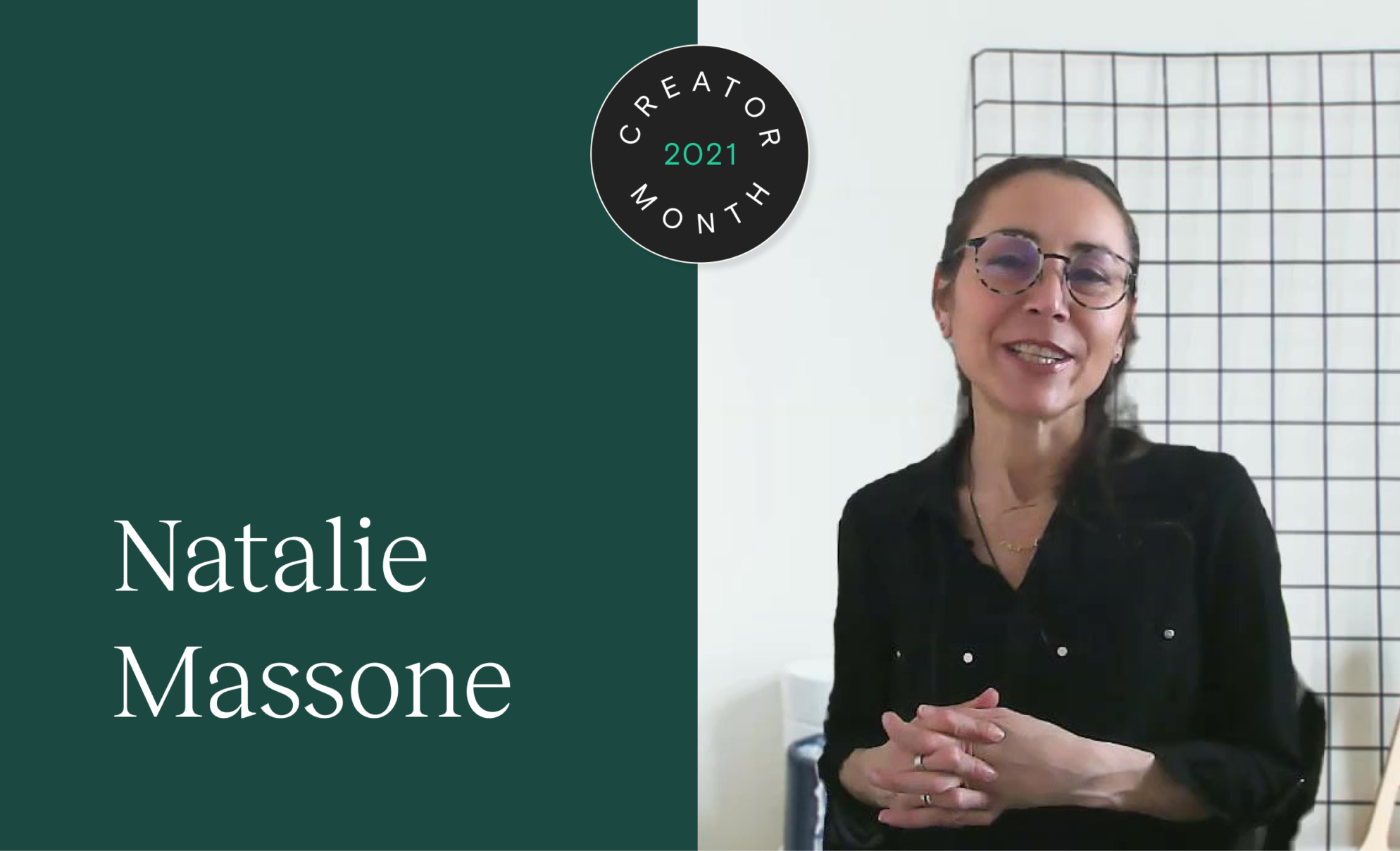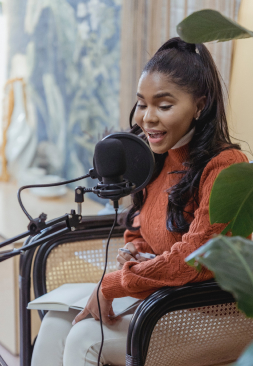Creator op-ed: “How I learned to be a mentor for my students”


The following is an op-ed from Teachable creator, Natalie Massone. Natalie is a UX/UI Design Lead, a certified trainer in the lifelong sector (RQF, L3), and the founder of Hoppipop! Studio, which offers a number of courses on mentoring and coaching as well as UX. Her background is in Fine Arts and Illustration. In honor of Teachable’s Creator Month, in which we celebrate and share the expertise of creators everywhere, Natalie shares her experiences within her industry and her thoughts on the benefits of mentoring both within the UX field and beyond.
Starting from ILP and SMART Goals: understanding the individual first
I have always enjoyed working in highly collaborative environments and with teams that can turn ideas and innovative visions into real products. Often, these elements are strictly connected with the UX Maturity level of the company. Other times, it depends more on the individual professionals’ attitudes and experiences. While I learned the hard way and could find mentors and guidance only in recent years, I wished to share my experience and skills to support and encourage other professionals of any age and at any stage of their career.
Feeling motivated and supported can make a big difference for any individual. And, it can help the growth of stronger professionals and, consequently, stronger teams. Innovation and inclusion begins with learning and applying critical thinking to design and industry problems. Along with empathy and self-reflection, they can become a compass for our life-journey.
Keeping these values in mind, I started drafting my first mentoring program, where students are asked to reflect on their short and long term goals, their strengths and weaknesses, as well as planning their weekly tasks toward the completion of a specific project. Completing their Individual Learning Plan (ILP) and SMART Goals templates is the first step that opens the mentoring journey.
From theory to practice: every mentee is different and unique
Volunteering at UXPA and LMF Network have been my first steps toward learning how to be a better mentor. Empathy and listening are the first key skills to understand how to support your mentees. Understanding their personalities is helpful too. There’s a difference between an introvert and an extrovert: self-confidence. Many of my mentees are introverted individuals who need to find a safe-space to present their projects and ideas—without feeling judged or embarrassed.
Helping them at this stage is crucial to build the self-confidence necessary to succeed in their work or study environment and to feel motivated and prepared to face a meeting or an interview. On the other hand, extroverted personalities are more focused on progressing with their work. They tend to ask many technical and specific questions. And, they ask for practical training (such as understanding how to use a design software) or reference to literature, tutorials, or templates.
In these cases, some sessions overlap with coaching and training. Adapting my mentoring style to the mentee’s needs and personality is a different challenge every time, which drives me to keep learning.
If you’re interested in the benefits of mentoring, coaching is a great way to expand your profitable online course business. We have a free “coaching checklist” to lead you through it.
How to support mentees with different learning styles
The importance of active listening
If a key rule of mentoring is active listening, adapting our mentoring or teaching style implies understanding the mentee’s preferred learning style, which often aligns with their personality.
Usually, learners have a preferred learning style. These are most commonly reading and audio versus visual, videos, and kinesthetics. Most creatives, however, are comfortable with a variety of styles. And because many mentoring sessions happen online, it’s easier to share a screen and go through designs, images, websites, and videos.
But at the same time, the risk is information overload that distracts from the mentoring journey. When I notice this happening, I bring the conversation back to the key problem. I also make a note on the possible references that could be useful to the mentee and I will follow up with an email.
The 7 styles of the theory are:
- Visual: Do you like to learn by remembering symbols and images?
- Kinesthetic: All about doing things physically. Role playing, using things like flashcards
- Aural or Auditory: Retain the most information after hearing it
- Social: Work best when they participate in study activities with other people
- Solitary: Work best alone
- Verbal: Respond well to written or spoken words
- Logical: Use logic and structures in order to learn effectively
Finally, while I agree that individuals actually do have preferred learning styles, these styles might actually come from the way teaching was vehiculated in their early years of school or by an acquired routine. Nowadays, learning styles are applied in most schools. Kids are generally more confident with technology and their surrounding contexts, making it easier for them to access learning in a variety of forms (audio, video, imagery, text, social, or kinesthetic).
I was born when smart-phones didn’t exist. I studied on books and listened to the radio. The TV wasn’t always working or interesting. In my twenties, I needed to learn how to use a smart-phone and to work with the most common design software. I discovered online tutorials and transitioned from textbooks to video, simply because it was a more effective way of learning a computer software, allowing me to combine listening, watching, and practice.
In general, if individuals tend to adapt to what exists, they use what’s easier, quicker, and most effective to reach their learning goals. Like in User Experience (UX), where designers are asked to find those solutions that allow users to effectively reach their goals through an easy UI and quick journey, mentors should refine their skills in order to understand which methods or learning styles are most effective for their mentees: find out by asking questions and listening.
Mentees want answers
Mentees feel rewarded when they receive solid advice on how to overcome their career roadblocks or improve their design work. They wish to learn more about design best practices as well as comparing their experience with other professionals. They want to find a feasible solution to apply the next day at work or to their BA/MA projects. As a mentor, it’s important not to provide a ready-made solution, but rather to engage in a conversation around the problem, explore how others solved a similar issue, and provide real-life examples if relevant.
Focusing on the wrong problem is often the problem
Talking about how you, as a mentor, solved (or couldn’t solve) a similar problem that occurred in a different context allows the mentee to relate to the problem from a different point-of-view. I find this technique particularly helpful especially before brainstorming potential solutions and diving deeper into the problem.
Asking more questions around a variety of elements—from team collaboration to project’s objectives. Emotionally detaching from a professional situation or from a design problem and analyzing all the elements involved can help the mentee in identifying the critical factors that need to be fixed or eased.


Mentoring helped me grow as an entrepreneur
Leading by example
I find myself following more and more the same advice I give to my mentees. While I’m still building my first course and planning new projects, mentoring is giving me a deeper understanding of my audience. Listening to my mentees is helping me to give structure to my own work and daily routine, as well as improve the content and structure of my first course What About UX? where I try my best to provide a springboard for new learners.
Students receive practical guidance on where to start in UX. They can explore literature and academic references as well as industry examples. Or, they can actively participate in online workshops, discussions, webinars, or team-work activities. They can also use the lesson’s comments area to give and ask for feedback.
Mentoring is not only helping me to develop better products for my target audience, but to also:
- Grow a more flexible mindset around how successful products should work
- Become more analytical and selective in my business choices
- Improve my patience, creativity, self-confidence, and resilience in overcoming roadblocks: reiterate, research and reiterate!
Finally, as an entrepreneur, mentoring is helping me to keep focused on the users’ needs and product’s goals, as well as to grow a better understanding of marketing strategies and improving the planning and implementation of future projects.
